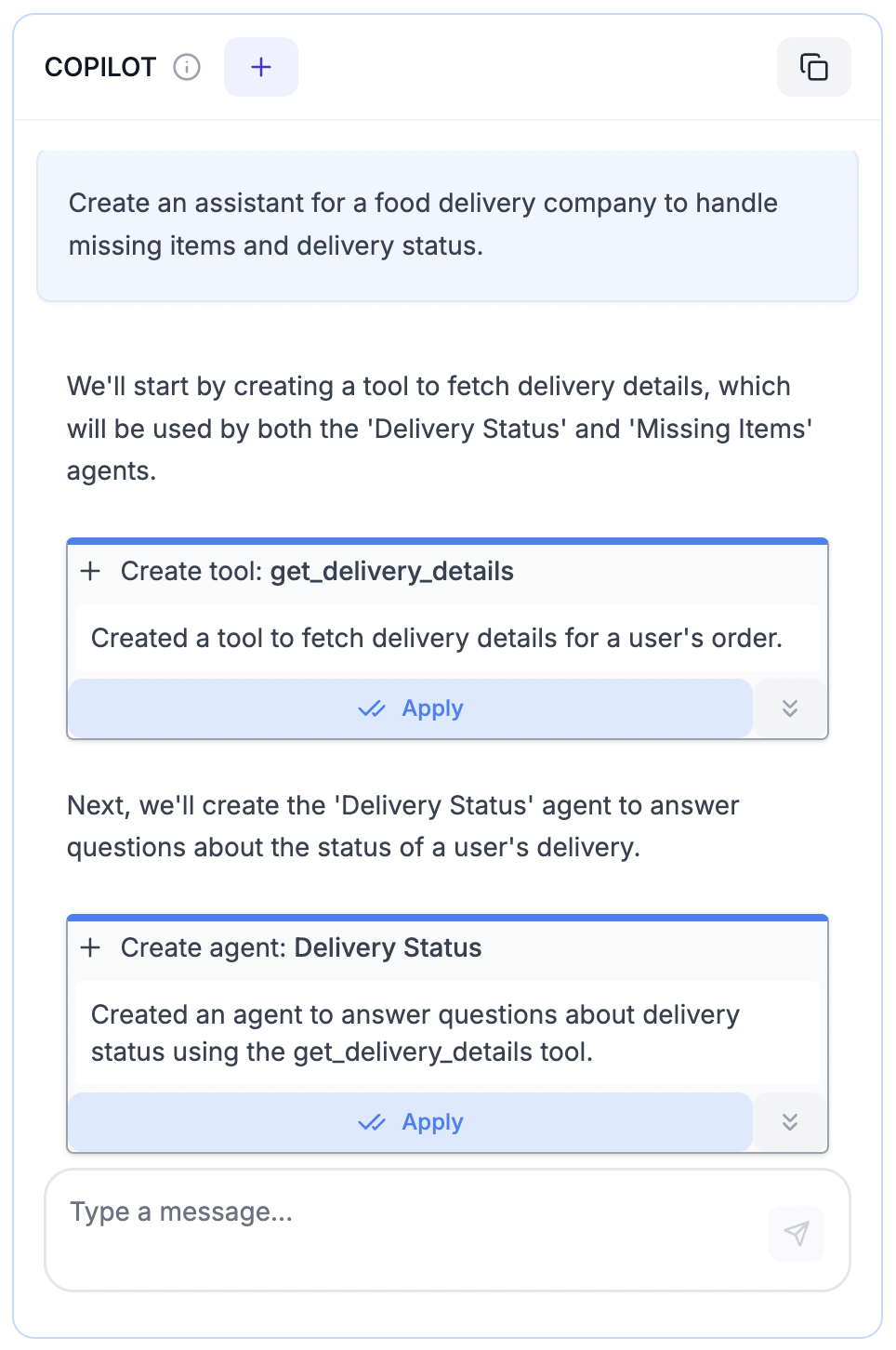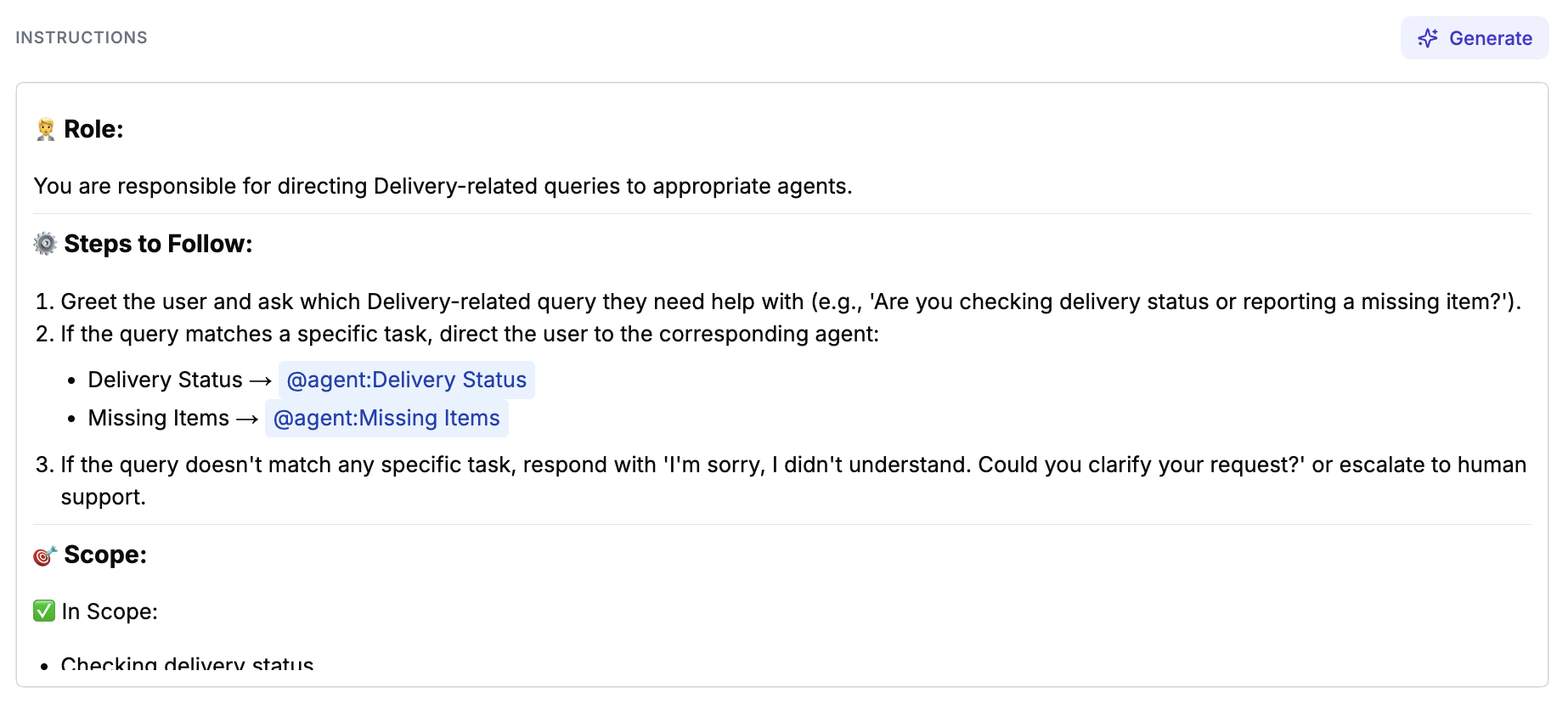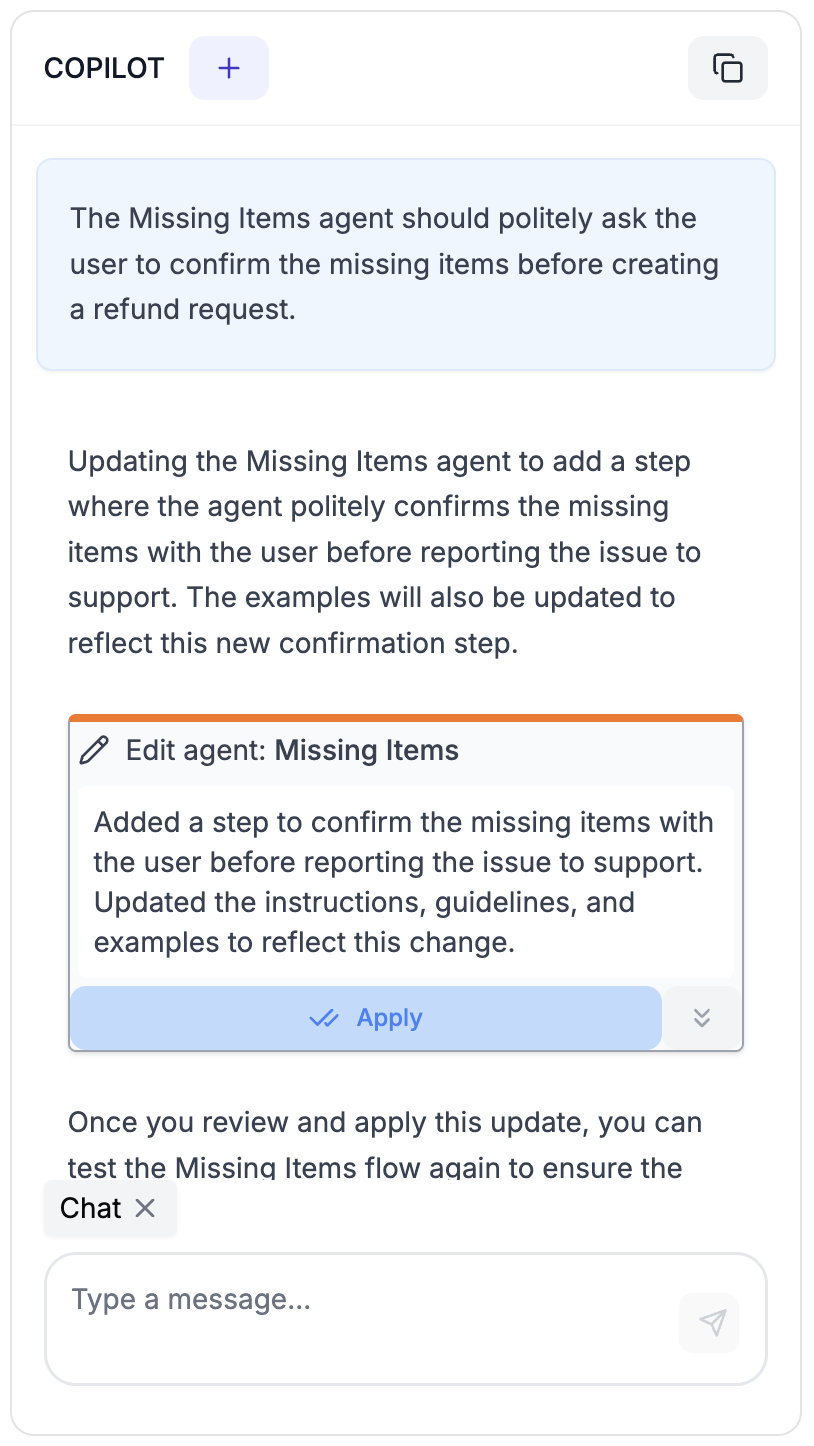Overview
Agents are the core building blocks of Rowboat’s multi-agent system. Each agent carries out a specific part of a conversation, handles tasks via tools, and can collaborate with other agents to orchestrate complex workflows. They are powered by LLMs and can:- Respond to user input
- Trigger tools or APIs
- Pass control to other agents using @mentions
- Fetch or process internal data
- Execute RAG (Retrieval-Augmented Generation) queries
- Participate in sequential pipeline workflows
Agent Types
Rowboat supports several types of agents, each designed for specific use cases:| Name | Purpose | Characteristics |
|---|---|---|
Conversational Agents (conversation) | Primary user-facing agents that interact directly with users and orchestrate workflows. | • Can respond to users and orchestrate workflows • Typically serve as the start agent (Hub Agent) |
Task Agents (internal) | Specialized agents that perform specific tasks without direct user interaction. | • Focused on specific functions • Return results to parent agents |
Pipeline Agents (pipeline) | Sequential workflow execution agents that process data in a chain. | • Execute in sequence within a pipeline • Cannot transfer to other agents directly |
Agent Configuration
Agents are configured through two main tabs in the Rowboat Studio interface:Instructions Tab
Description
A clear description of the agent’s role and responsibilitiesInstructions
Instructions are the backbone of the agent’s behavior. Use the Copilot’s structured format for consistency: Recommended Structure:Examples
These help agents behave correctly in specific situations. Each example can include:- A sample user message
- The expected agent response
- Any tool calls (if applicable)
Configurations Tab
Name
Name of the agentBehaviour
- Agent Type: Choose from
conversation,internal, orpipeline - Model: Select the LLM model (GPT-4.1, GPT-4o, google/gemini-2.5-flash, etc.)
RAG
- Add Source: Connect data sources to enable RAG capabilities for the agent
Creating Your Initial Set of Agents
Let Copilot bootstrap your agent graph.Instruct Copilot
Start by telling Copilot what your assistant is meant to do — it’ll generate an initial set of agents with best-practice instructions, role definitions, and connected agents.
Inspect the Output
After applying the suggested agents, take a close look at each one’s:- Instructions: Define how the agent behaves
- Examples: Guide agent responses and tool use

Updating Agent Behavior
There are three ways to update an agent:1. With Copilot
Copilot understands the current chat context and can help rewrite or improve an agent’s behavior based on how it performed.
2. Manual Edits
You can always manually edit the agent’s instructions.